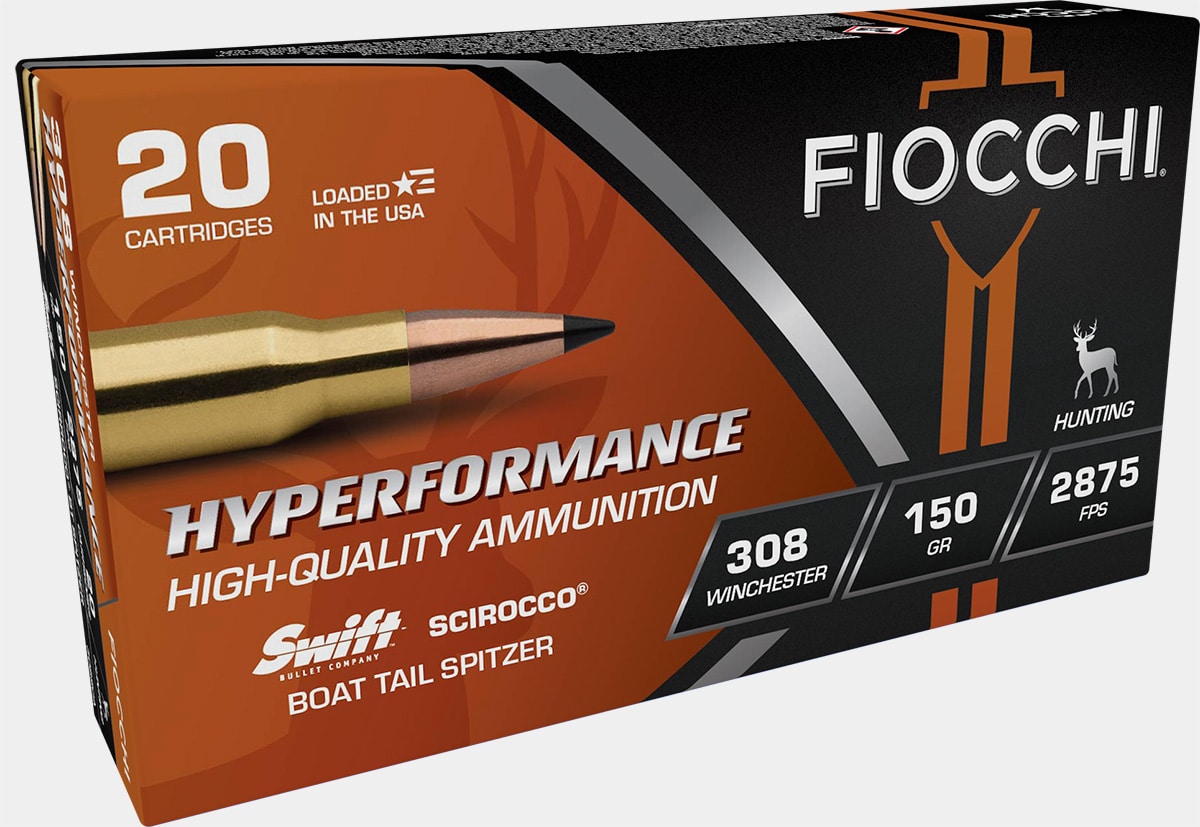In today’s article, veteran hunter Wayne van Zwoll reviews the new Springfield Armory Model 2020 Boundary rifle. Designed with an internal magazine and other features sportsmen will appreciate, the rifle promises an exciting new addition to this bolt-action line. Springfield Armory provided a loaner gun to the author for this review.
If I were to be granted a wish, I might mention something like my youth back, or maybe a Porsche. But, if I really had a little time to think about it, I might just simply say a good hunting rifle. You know, one with traditional lines and classic styling, but with something “new” to offer.
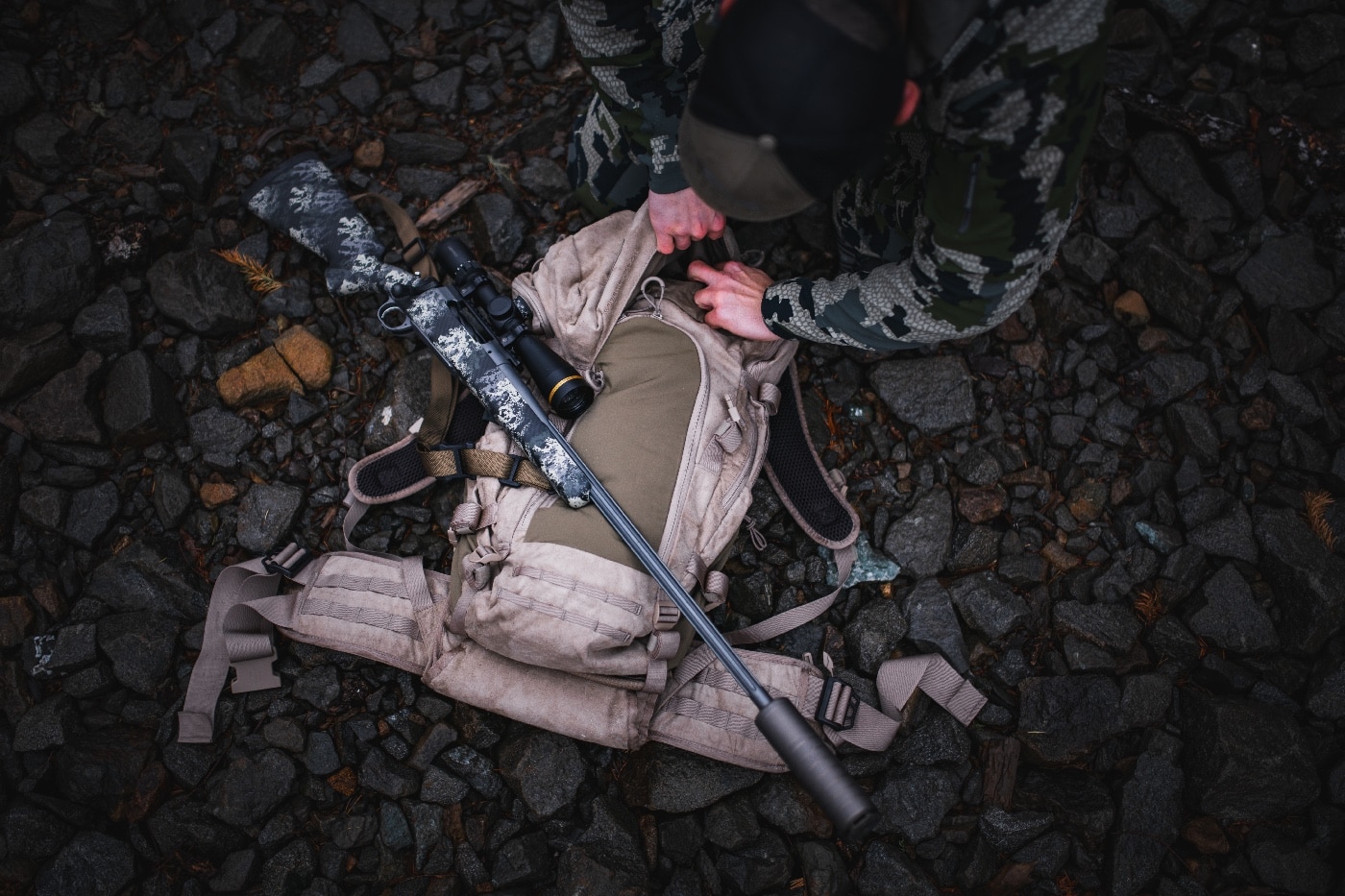
Well, I recently had that wish come true when a long box turned up at my local gun-shop. Inside was a heavy black soft case, the kind Springfield Armory ships. However, its “2020” tag threw me, though; my wish was for a new rifle.
But indeed, it was.
The Boundary Rifle Comes from Good Stock
The 2020 Boundary is the newest sibling of Springfield’s first bolt-action rifle, the 2020 Waypoint, introduced in … well, of course. I’d been impressed enough with a Waypoint in 6.5 Creedmoor to report on it, then to snare two more, in .308 and 6mm Creedmoor.
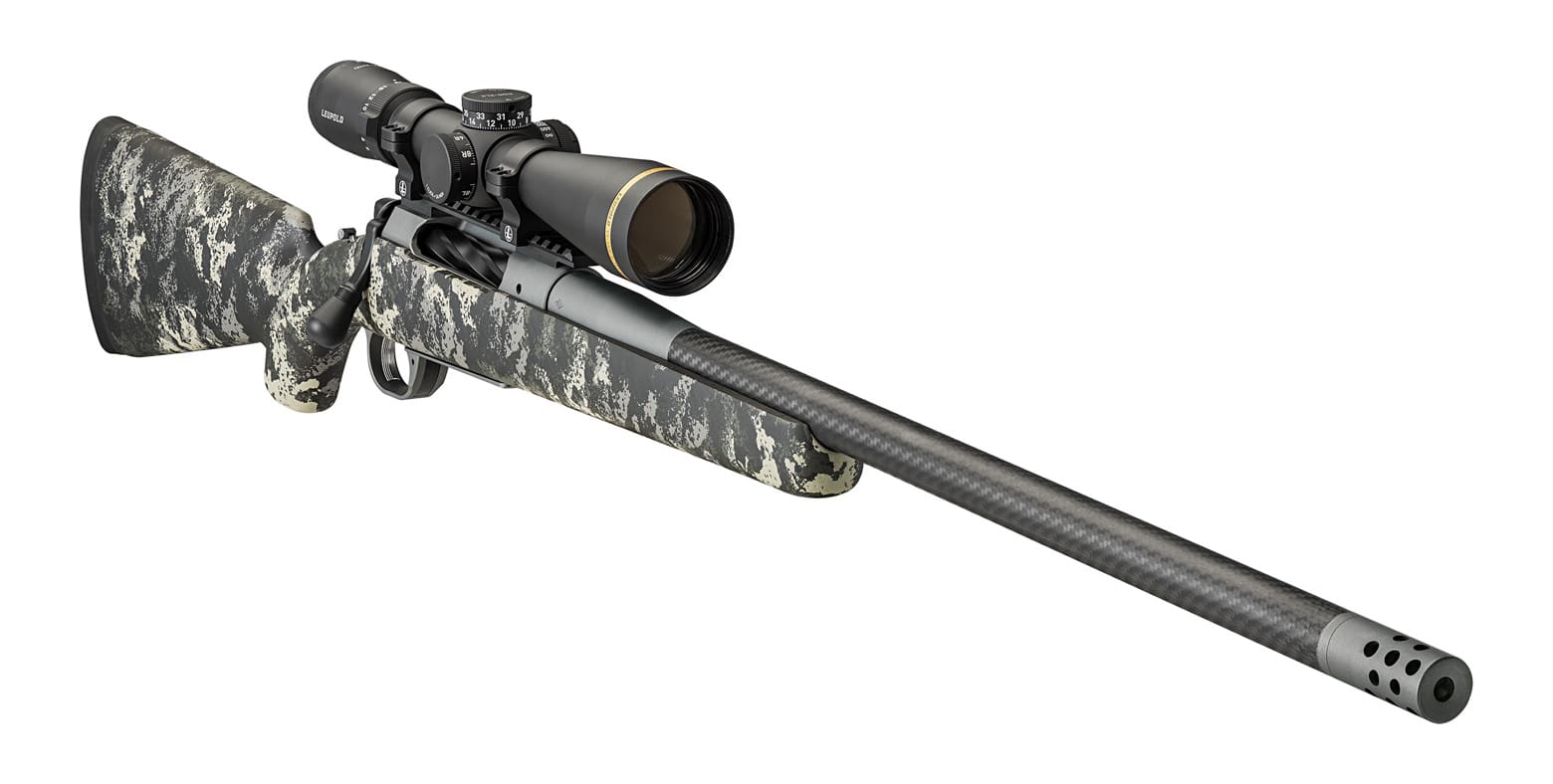
The Boundary has the same bones as the Waypoint — a good thing, because they’re good bones. The Springfield-built action — offered in both short- and long-action variants — shares the Remington 700’s footprint, so it fits stocks and accepts triggers designed for the 700. Not that you’ll wish upgrades.
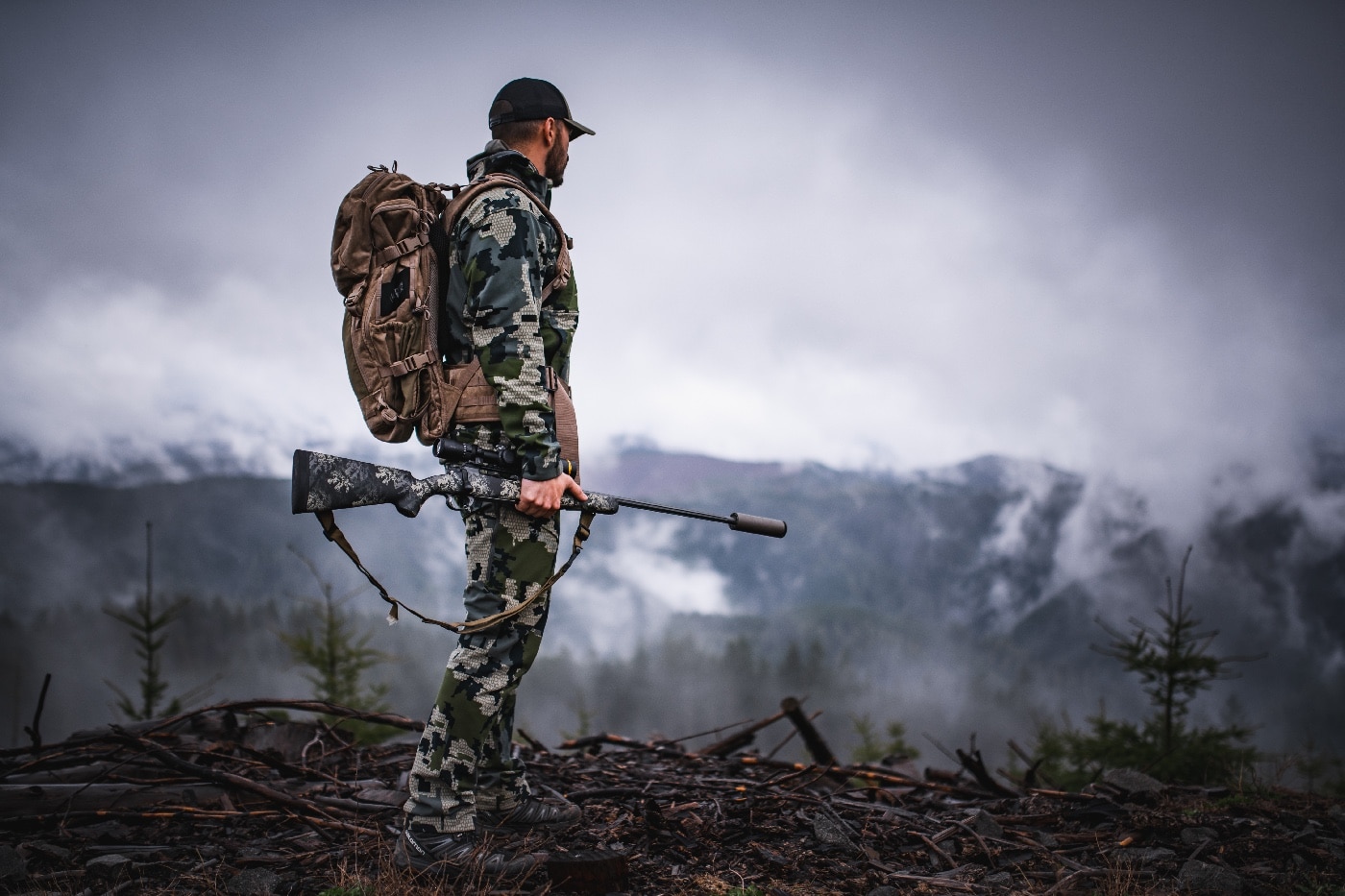
Like the Waypoint, the Boundary features a hand-laid, pillar-bedded, carbon-fiber stock. The stainless receiver has an integral recoil lug. A TriggerTech trigger adjusts externally down to 2½ lbs. if you so desire. A lock time of just 1.9 milliseconds helps you hit where you’re looking as the trigger breaks. The two-detent side safety permits cycling when it’s “on.”
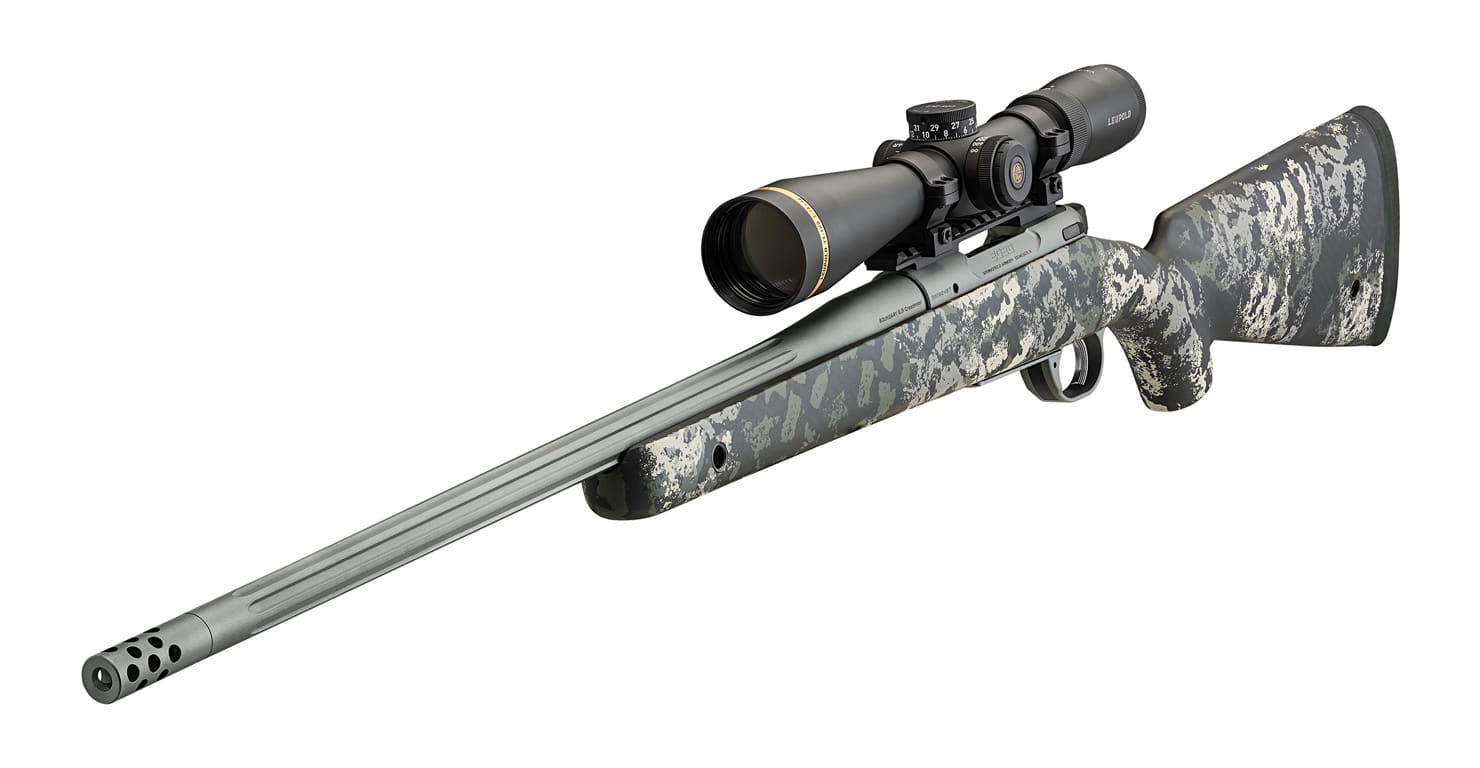
As in the Waypoint, a twin-lug bolt, spiral-fluted and nitrided, slides piston-smooth through the Boundary’s EDM-cut races. Dual cocking cams help with bolt lift. The bolt disassembles easily without tools. Like the receiver, it is machined after heat-treating to ensure finished dimensions match specs. The receiver, bottom metal, barrel shank and brake are Cerakoted. A 6” Picatinny rail accommodates scopes.
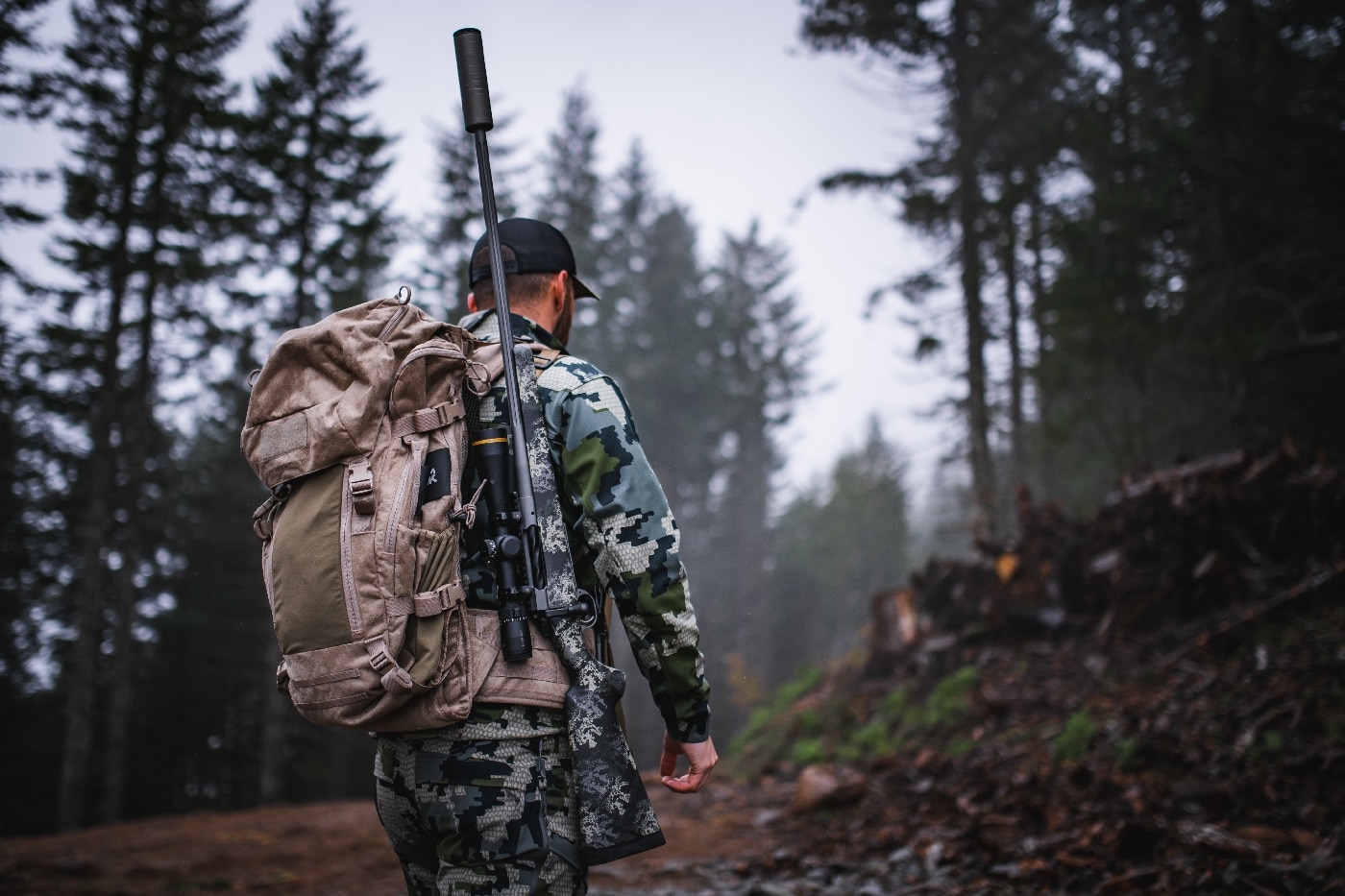
Springfield lists both BSF carbon-fiber and fluted stainless barrels for all seven of the Boundary’s chamberings — .308 Winchester, 6.5 CM, 6.5 PRC, 7mm Rem. Mag., 7mm PRC, .300 Win. Mag. Mag. and .300 PRC. The .308’s barrels are 20” long, the 6.5 CM’s 22. Springfield settled on 24” for all the others.
[Be sure to read our article What Is 6.5 Creedmoor? for additional information on that cartridge.]
The radial brakes, on 5/8-24 threads, are removable. Rifling twists stabilize long, ballistically efficient bullets. Each carbon fiber-barrel has a stainless core “in a roll-wrapped carbon-fiber sleeve loaded under tension.” Almost the entire length of the sleeve is free of the core, the gap conducting heat away. Fluting under the sleeve trims weight and speeds cooling.
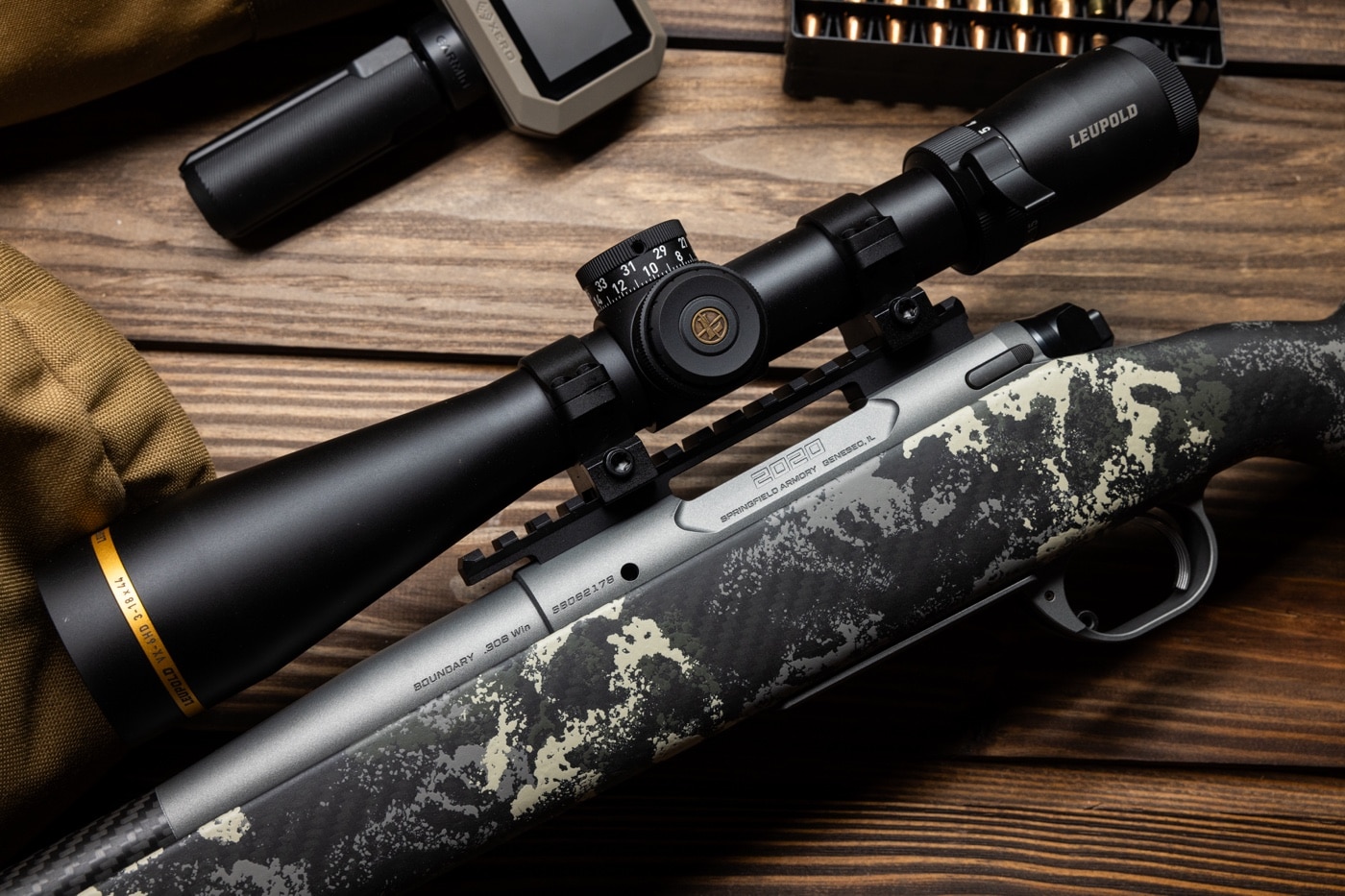
Springfield’s accuracy guarantee for the Boundary is the same as for the Waypoint: .75 MOA with match-grade factory loads for a three-shot group with a skilled shooter.
Diverging Point?
But there are differences between these 2020s.
First: magazines and stocks. The Boundary has an internal magazine, its hinged steel floorplate secured by a guard-bow latch. For hunting, I personally much prefer it to the Waypoint’s detachable single-stack box that protrudes 1¾”. With the Boundary, I can more easily carry the rifle with one hand at its balance point. [Ed. note: Be sure to read What Is the Difference Between a Clip and a Magazine to better understand the two things.]
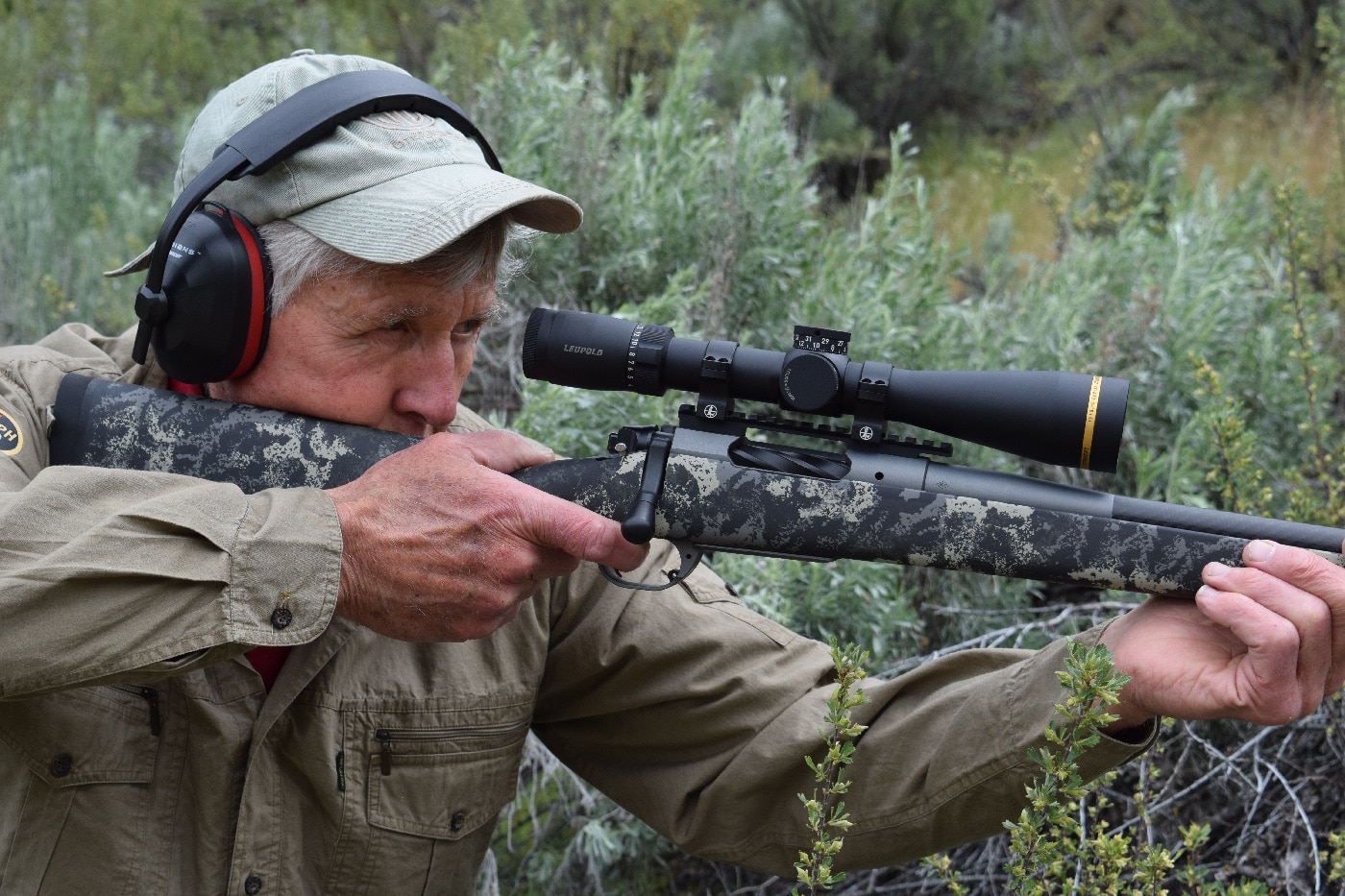
The Boundary has a trimmer buttstock, smoothly ovoid in cross-section (the Waypoint’s has six angles). The straight comb is more slender, though well-rounded and supportive. It has no cheekpiece. It naturally aligns my eye with scopes in low and medium rings. There’s no comb nose cut-out to allow for bolt removal, as the bolt clears the nose easily.
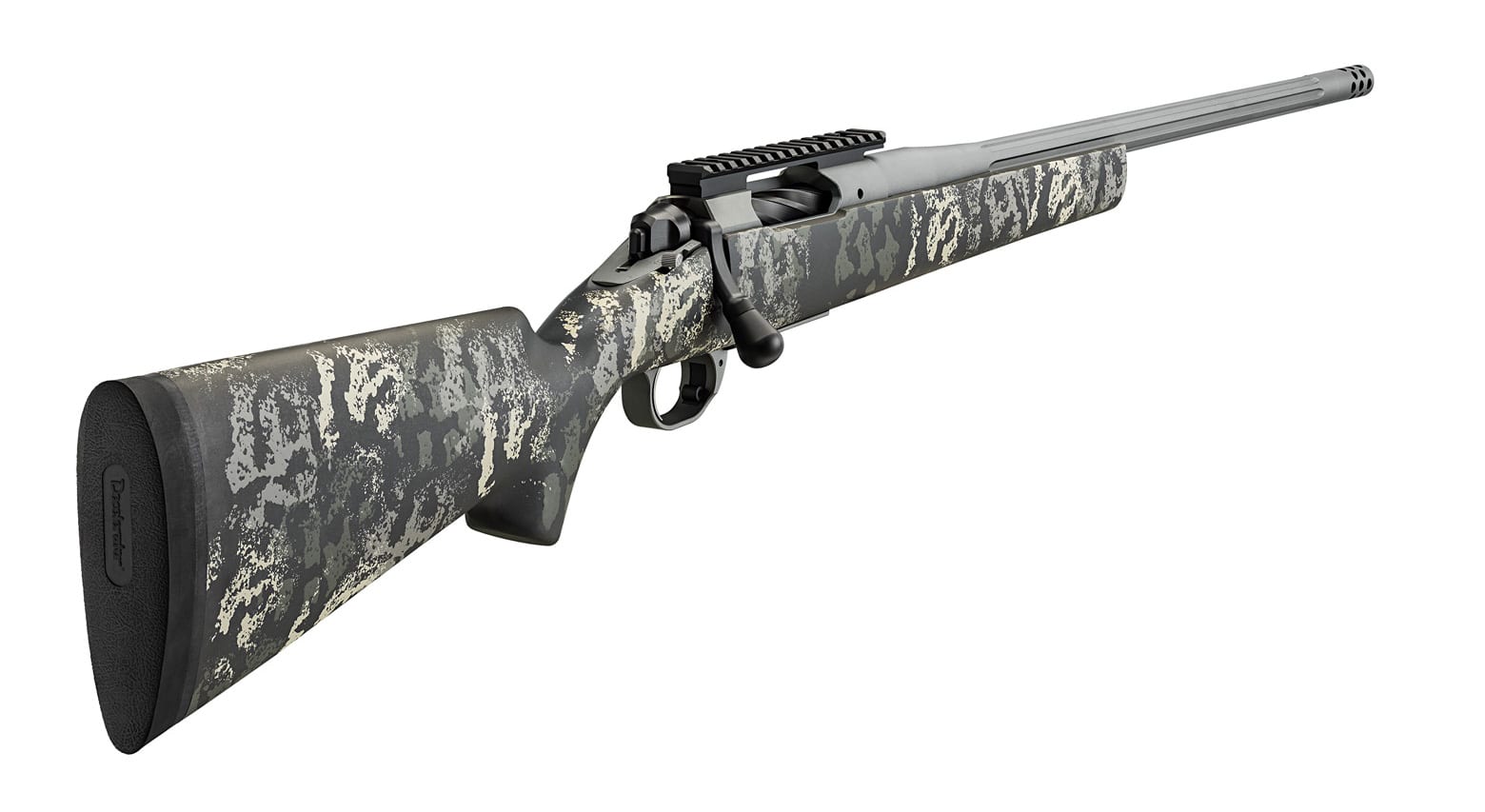
Instead of sling swivel pockets on both sides and in front of the toe, the Boundary has one pocket on the left side. The buttstock’s bottom-line rises at a pleasing angle from the 1-inch black Pachmayr recoil pad to a traditional “sporter” grip. (The Waypoint stock is much deeper behind a thick, near-vertical grip, whose trailing edge drops very low from the tang.)
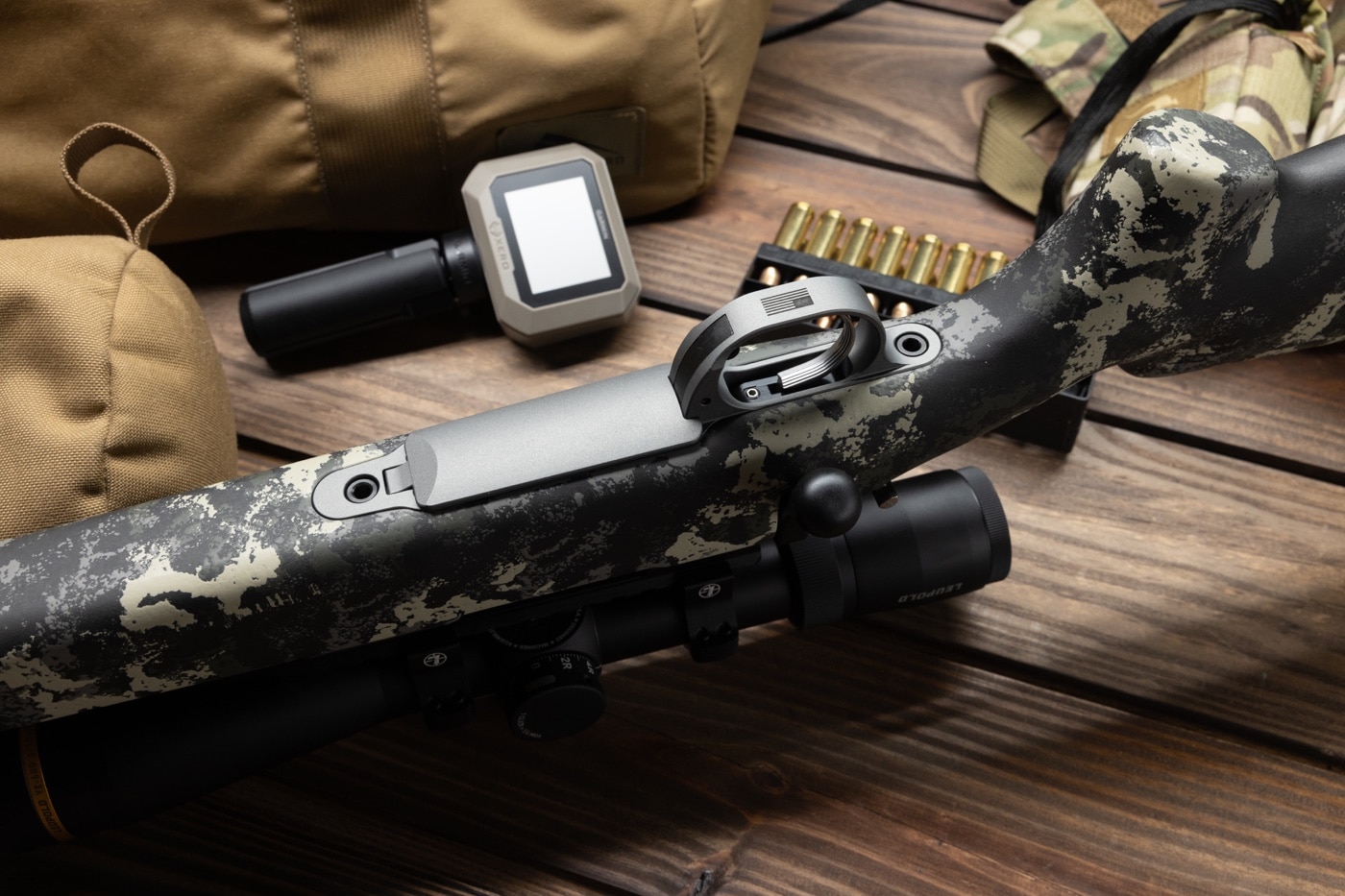
The Boundary’s fore-stock is trimmer and less angular in cross-section, also 2” shorter than the Waypoint’s. It has two 1¼” M-Lok slots up front instead of three, and a single left-side sling swivel pocket instead of one on either side. The Boundary’s stock is finished in what’s described as Rogue camo. It’s attractive; but so are the other finishes on Waypoint stocks.
Other disparities: The Boundary’s detachable bolt knob is smoothly pear-shaped and a tad shorter. The triggerguard is rounded, not square and, praise be, was thoughtfully profiled to follow the curve of the trigger. These changes may seem small; to my eye they’re cosmetic improvements. For me, blocky is good if you’re building a guard-house; not so shaping a guard bow. If unnecessary angles were beautiful, Porsche Roadsters would have had them by now.
I like the Boundary’s dimensions and balance. It points naturally and absorbs the shock of firing well. The trigger arrived with a clean break just shy of 4 lbs. — exactly the same as on my Waypoint in 6mm CM. Adjustment, should I want it, is easy.
Springfield has a winner in the 2020’s push-feed action. After four rifles and loads now totaling in the dozens, I’ve had no failures to cycle, not even a hiccup. Bolt travel is piston-slick, with almost no rattle. There’s negligible end play at full retraction. From both the Waypoint’s AICS and the Boundary’s internal box, cartridges slide seamlessly up and in. While the ejection port isn’t huge, top-loading with single cartridges is easy.
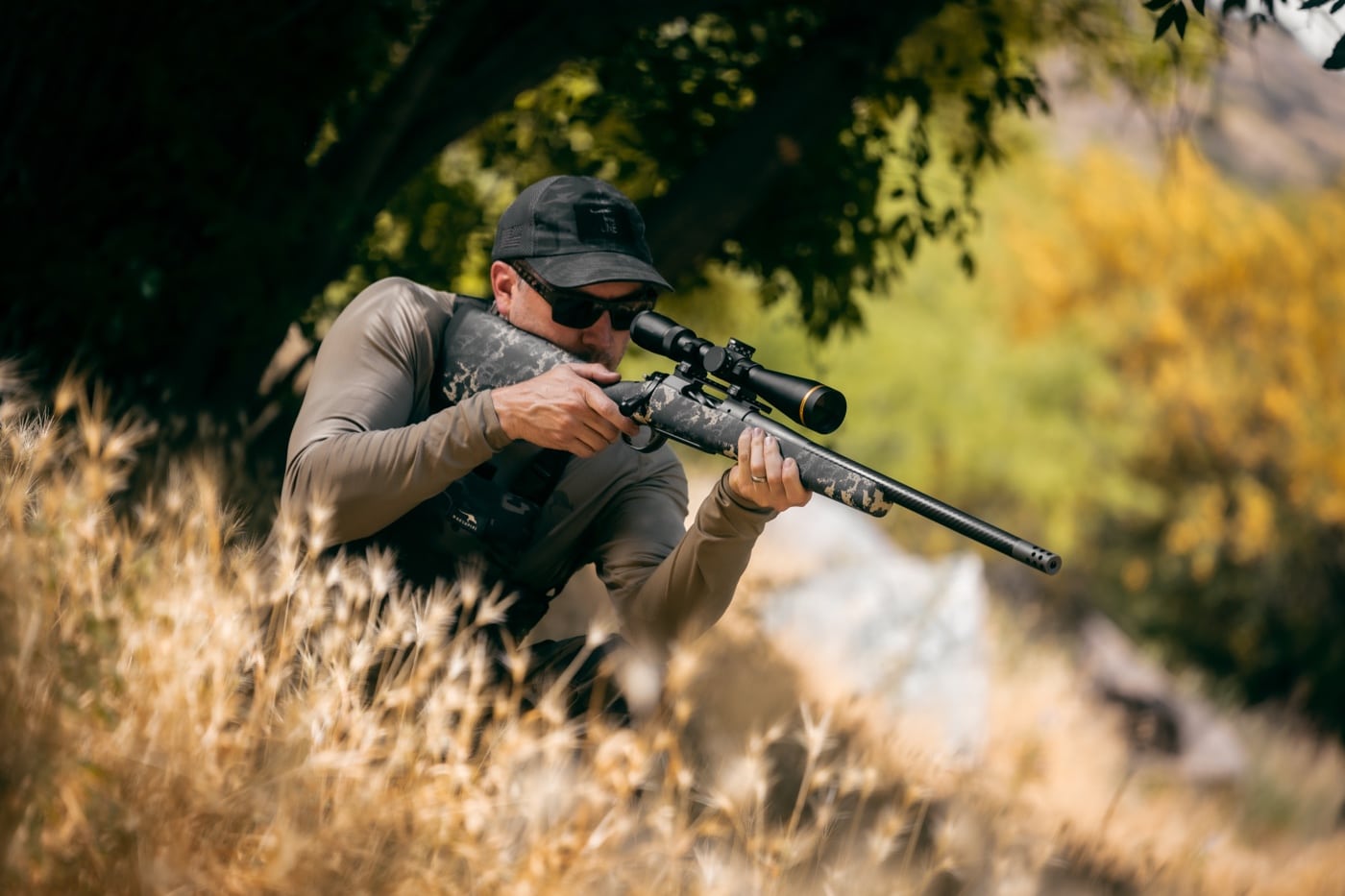
The bolt-face extractor is stronger than the Mauser faithful might assume. Inserted through a slot in the center of the right-hand (lower) locking lug, it’s secured by its own beefy shoulders. The claw is a generous 6mm wide across most of its face, 5mm at its leading edge, and is designed to prevail over case-sticking handloads. The face angle makes for easy push-feed engagement. A peppy plunger ejector boots from 4 o’clock.
Model 2020 Boundary Specifications
| Chamberings | .308, 6.5 CM, 6.5 PRC, .300 PRC, .300 Win. Mag., 7mm Rem. Mag., 7mm PRC |
| Barrel | 20”, 22”, 24” (stainless steel or carbon fiber) |
| Weight | 6 lbs., 10 oz. to 7 lbs., 2 oz. |
| Overall Length | 41” to 46” |
| Sights | N/A, Picatinny rail |
| Stock | Carbon fiber |
| Action | Bolt-action |
| Finish | Cerakote |
| Capacity | 3-4 |
| MSRP | $2,173-$2,599 |
Time Spent on the Shooting Range
How does the Boundary shoot? The sample I received was a short action in .308 Win., and I’m pleased to report it went from good to great. Early groups were capable for a hunting rifle firing my assortment of factory loads, most intended for big game. But I wanted even better. To ensure it got a fair chance to shine, I enlisted a sharp-shooting friend, Sam Shaw, to share time on the rifle and my Oehler 35 chronograph. Evidently, the barrel likes to send bullets, as groups tightened during our range session. The prelude ate enough cartridges to limit some multiples of groups, but enabled us to tap the Boundary’s inner self.
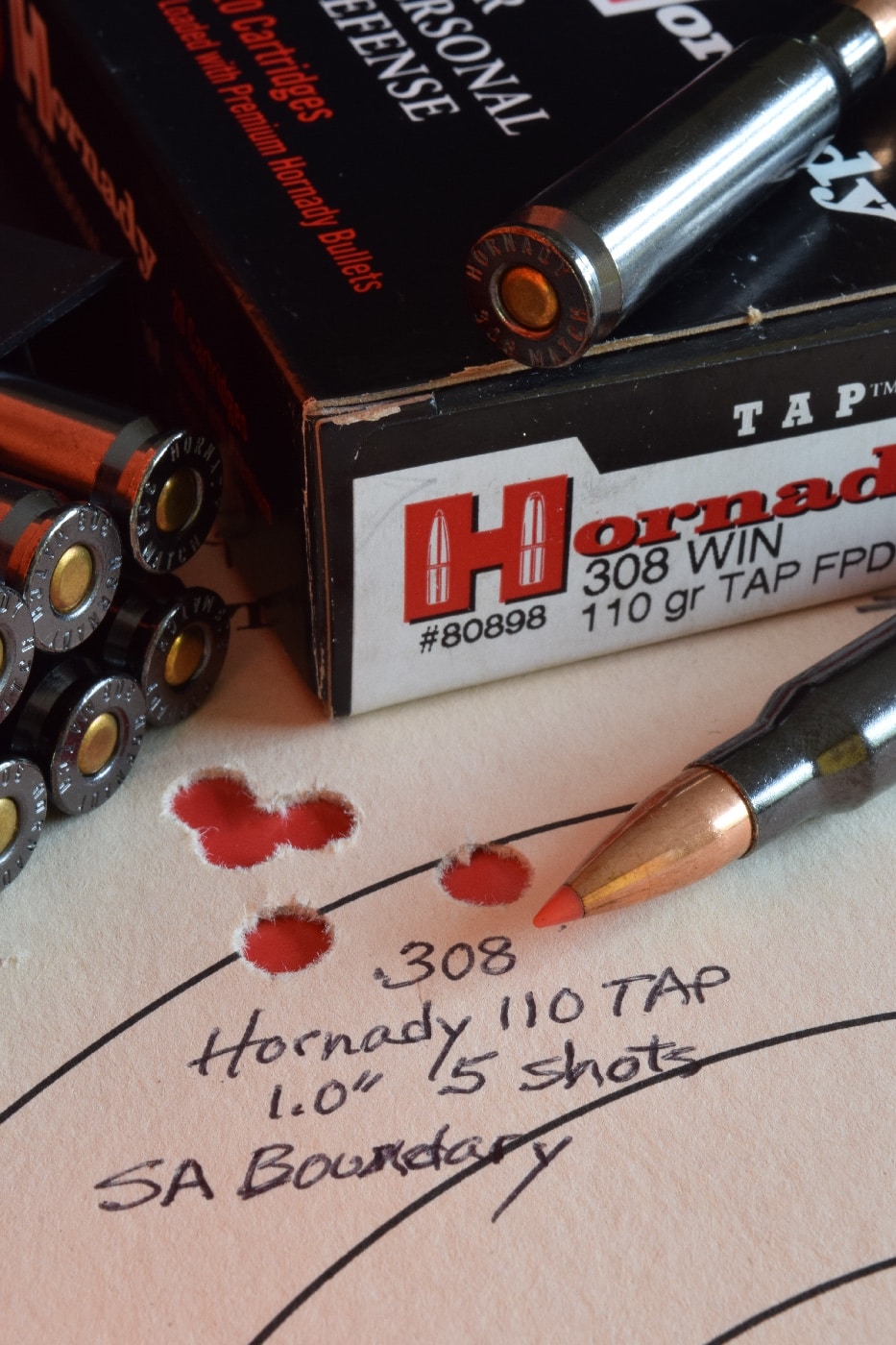
The rifle was delightfully un-fussy about the loads it gobbled, with us trying a broad range of 16 loadings ranging from 110 grains up to 185 grains. Over the course of our shooting, the rifle punched near-minute five-shot groups at either end of the 110- to-185-grain bullet-weight spectrum.
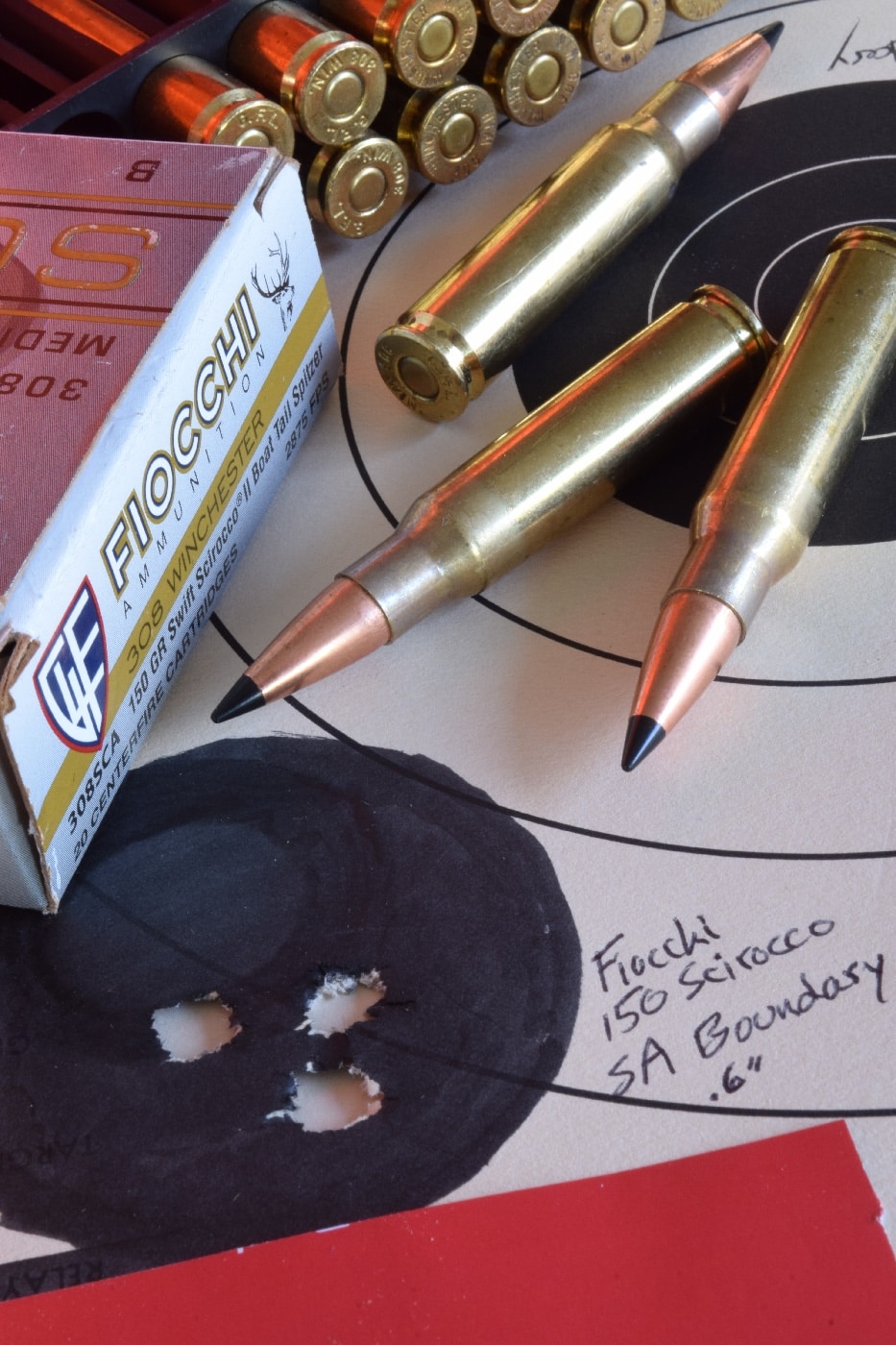
All told, we ended up with three of the best loads hovering at half an inch with three-shot groups — well under the .75 MOA accuracy guarantee. This is excellent accuracy for a 6½-lb. sporter fed a variety of commercial loads!
Shooting Performance
Final Thoughts on the Boundary Bolt-Action Rifle
I’m certainly pleased with the Boundary. Surely other hunters will give it high ratings in regards to function, accuracy, balance and pointing qualities. Its profile makes it more trail-worthy than the Waypoint, which isn’t as easy to cradle. Its light weight suits it to long treks in steep places, weighing from 6 lbs., 10 oz. at the lightest up to just 7 lbs., 2 oz. at the heaviest.
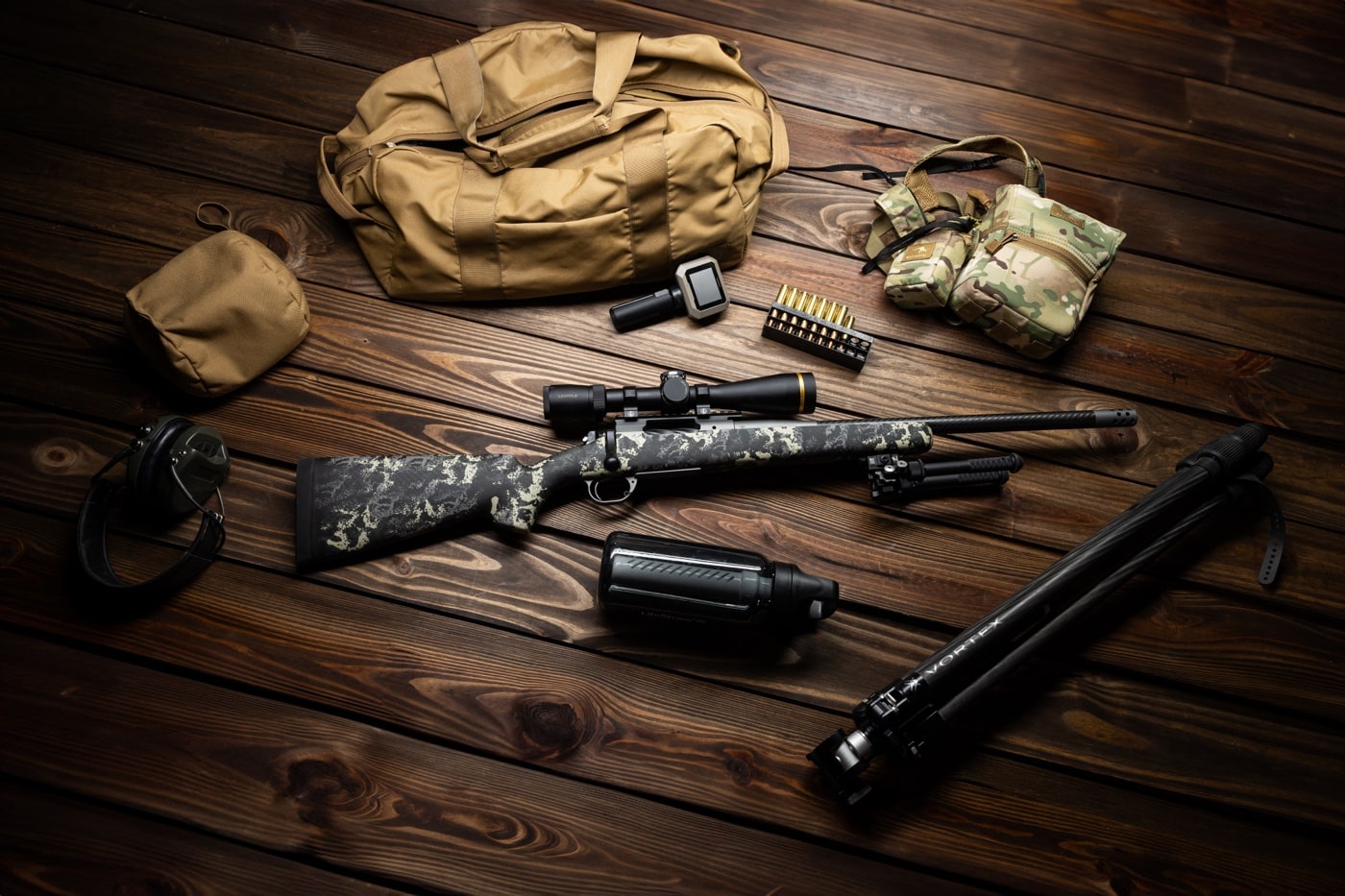
With its four powerful 7mm and .30-caliber chamberings, it has enough reach and power for any game anywhere, save Africa’s thick-skinned brutes. And with the .308 and 6.5 chamberings, you have even more options. Springfield has done itself proud with this hunting rifle! And with an MSRP ranging from $2,173 to $2,599, it’s a lot of rifle for the money. Magazine capacity is four in rifles bored to .308 and 6.5 CM, three in all the others.
Failings? None. But as I often shoot with a sling and carry a rifle in traditional fashion in the hills, QD swivel studs, front and rear would be most helpful. I’d move the comb nose a half inch back and flute it generously, straighten the top-line of the grip slightly and round the forend belly a tad. But, I might just be nit-picking here. I guess I should have mentioned these things in my first wish … .
Editor’s Note: Be sure to check out The Armory Life Forum, where you can comment about our daily articles, as well as just talk guns and gear. Click the “Go To Forum Thread” link below to jump in!
Join the Discussion
Featured in this article
Read the full article here




